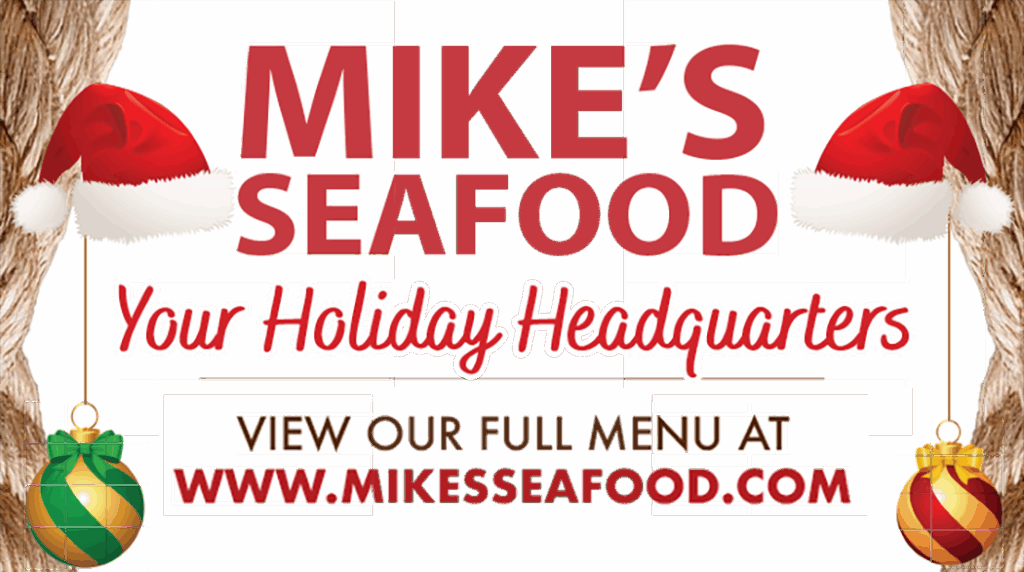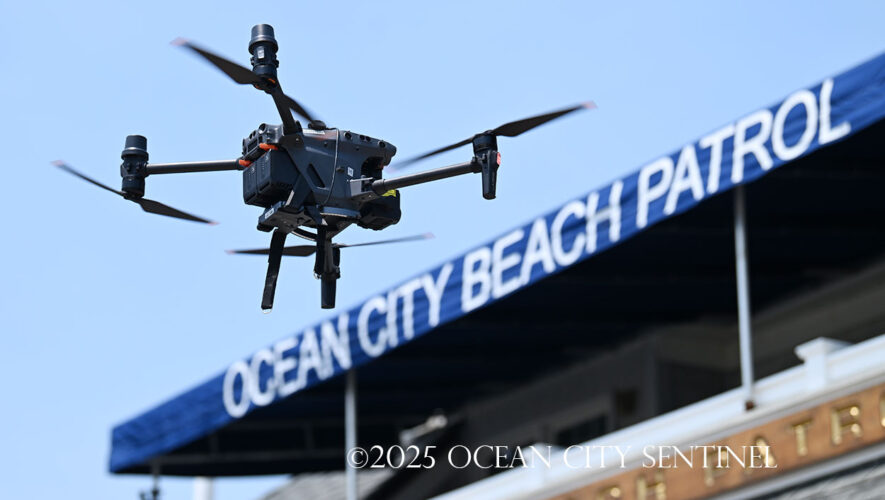Rutgers presentation at O.C. Library touts nutritional value, health benefits, sustainable industry employing thousands
OCEAN CITY — Seafood is abundant, a terrific source of lean protein and a sustainable industry that employs tens of thousands and feeds many more.
What’s the catch? Americans consume far below the recommended dietary amounts and are missing out on its many health benefits.
That was the message Oct. 26 when members of Rutgers New Jersey Agricultural Experiment Station presented “What’s the Catch? New Jersey Seafood & Healthy Living.”
Representatives of Rutgers Cooperative Extension Family & Community Health Sciences from the coastal counties of Atlantic, Cape May, Ocean and Monmouth talked about the abundance of seafood options caught in state waters, their sustainability and economic impact, as well as health benefits of consumption and even how to select and prepare some seafood dishes.
About two dozen attendees were in the audience for the 90-minute talk at the Ocean City Free Public Library.
Douglas Zemeckis, assistant professor with Rutgers Cooperative Extension of Ocean County, discussed the state’s shellfish fisheries and aquaculture, saying there is great seafood production along New Jersey’s 130 miles of coastline, as well as its back bays and estuaries where there are bountiful resources and habitats.
Zemeckis said New Jersey’s commercial fisheries rank fourth in the country, with a $3.7 billion annual added value supporting 52,000 jobs in 2019, citing a 2022 study by the National Oceanic and Atmospheric Administration.
Major commercial fishing ports are located in Belford, Point Pleasant, Barnegat Light, Atlantic City and Cape May, as well as Wildwood and Port Norris.
Atlantic sea scallops are among the largest catch, putting the state above Alaska for production, Zemeckis said, noting the diverse species caught include the surf clam, ocean quahog, longfin squid, illex squid, blue crab, summer flounder, monkfish and lobster.
Zemeckis said the value is monitored in numerous ways, including the Vessel Monitoring System that reports the location of every registered commercial ship every 30 minutes.
In addition, the state’s recreational fishery is a $1.2 billion annual industry supporting 15,000 jobs and 1 million anglers (NOAA, 2018).
The catch includes summer flounder, bluefish, black sea bass, striped bass and tautog.
In fact, according to data, the state’s summer flounder catch of 3.6 million pounds made up 50 percent of the total from 2018-20, with New York the closest at 23 percent.
Zemeckis provided a brief overview of fisheries management, which includes evaluating the stock, including age and size composition, reproductive capacity, mortality rates, stock size and catch.
He said state and federal agencies collect data through commercial and recreational reporting, scientific observations and biological factors, use it to assess the status of the stock and then set catch targets based on scientific data and research to produce more reliable information.
Zemeckis also discussed aquaculture and its many benefits.
He said the hard clam and oyster fisheries were decimated by disease and overharvesting and the bivalves now are grown mostly via aquaculture, which he defined as the farming of aquatic organism, including fish, mollusks, crustaceans and plants.
Zemeckis said the practice began in the United States in the 1920s and in New Jersey in the 1970s, and has exploded to the tune of nearly 180 million tons per year.
Hard clam aquaculture consists of three stages — the hatchery, nursery and grow out.
Hatcheries obtain and maintain broodstock, conditioning the animals for spawning. The hatchery seed is usually sold to a nursey at between 1 and 4 mm in size.
The nursery places the clams in upwellers or downwellers, devices that enable clams to feed on phytoplankton in the natural water that is pumped into them. This phase continues from spring through summer until clams have reached 10 to 12 mm, the size regarded as best for successful planting.
Rachel Tansey of Rutgers Cooperative Extension of Monmouth County talked about the nutrient and health benefits of seafood.
She said seafood is nutrient-dense, high in protein, low in fat, saturated fat, sodium and calories and is a good replacement for meats.
Seafood contains B12, Vitamin D, selenium, zinc, iron, copper and Omega 3 fatty acids
Tansey said consuming seafood assists in mental and brain health, promotes heart health and circulation, maintains healthy bones, supports the nervous system and enhances immune function.
She said Americans do not eat nearly enough seafood. It is recommended that adults eat two to three servings per week, about 4 ounces based on a 2,000-calorie diet. Children should eat about 1 ounce starting at age 2 and increase to 4 ounces by age 11.
Tansey said seafood is bountiful off the coast and easily purchased.
Christine Zellers, FCHS educator/assistant professor with Rutgers Cooperative Extension of Cape May County, said seafood is a healthy, lean protein.
She discussed health threats such as the existence of mercury and biomagnification and federal guidelines for special populations such as pregnant women and children.
Zellers explained that biomagnification is the process in which larger fish or fish species contain more mercury because they have fed on smaller fish that contain the heavy metal.
The Environmental Protection Agency and Food and Drug Administration offer three tiers of safety: Best choices, good choices and choices to avoid. More information is available at epa.gov/fishadvice and fda.gov/fishadvice.
Zellers also discussed the sustainability of seafood.
She said management of U.S. fisheries helps prevent overfishing and rebuilds depleted stocks, minimizes bycatch and interaction with protected species, identifies and conserves essential habitat and considers social and economic outcomes for fishing communities.
At the same time, she said, aquaculture helps rebuild protected species and habitat, enhances coastal resilience, improves nutrition and food security and creates employment and business opportunities.
Joanne Kinsey, associate professor with Rutgers Cooperative Extension of Atlantic and Monmouth Counties, talked about selecting seafood at the market or on the dock.
She said it is important to inspect seafood before purchase to ensure it is kept on ice, the gills are red and eyes clear. For shellfish, there should be no cracks or breaks in the shell.
Kinsey said it is important to note the producer and check for company attestation and third-party certifications.
She also discussed cost-effective ways to buy seafood to get the most bang for the buck, such as buying in season, stocking up when on sale and saving the more expensive options for special occasions.
By CRAIG D. SCHENCK/Sentinel staff


